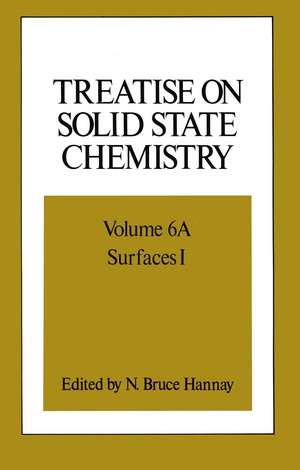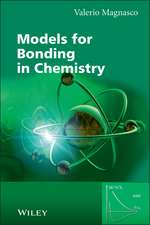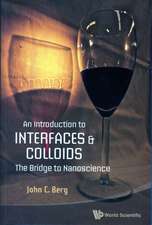Treatise on Solid State Chemistry: Volume 6A Surfaces I
Editat de N. Hannayen Limba Engleză Paperback – 26 oct 2011
| Toate formatele și edițiile | Preț | Express |
|---|---|---|
| Paperback (4) | 394.44 lei 39-44 zile | |
| Springer Us – 26 oct 2011 | 394.44 lei 39-44 zile | |
| Springer Us – 11 oct 2011 | 399.67 lei 6-8 săpt. | |
| Springer Us – 12 dec 2012 | 427.97 lei 6-8 săpt. | |
| Springer Us – 19 iun 2012 | 670.82 lei 6-8 săpt. |
Preț: 394.44 lei
Nou
Puncte Express: 592
Preț estimativ în valută:
75.48€ • 78.96$ • 62.70£
75.48€ • 78.96$ • 62.70£
Carte tipărită la comandă
Livrare economică 31 martie-05 aprilie
Preluare comenzi: 021 569.72.76
Specificații
ISBN-13: 9781461343158
ISBN-10: 1461343151
Pagini: 508
Ilustrații: XII, 494 p.
Dimensiuni: 156 x 244 x 27 mm
Ediția:Softcover reprint of the original 1st ed. 1976
Editura: Springer Us
Colecția Springer
Locul publicării:New York, NY, United States
ISBN-10: 1461343151
Pagini: 508
Ilustrații: XII, 494 p.
Dimensiuni: 156 x 244 x 27 mm
Ediția:Softcover reprint of the original 1st ed. 1976
Editura: Springer Us
Colecția Springer
Locul publicării:New York, NY, United States
Public țintă
ResearchCuprins
of Volume 6A.- 1 The Structure and Thermodynamics of Clean Surfaces—Principles.- 1. Introduction.- 2. Thermodynamics of Surfaces.- 3. The Structure of Surfaces.- 4. The Atomic Structure of Clean Surfaces.- 5. The Electronic Structure of Surfaces.- Acknowledgment.- References.- 2 Surface Structure—Experimental Methods.- 1. Introduction.- 2. Chemical Structure.- 3. Geometric Structure.- 4. Surface Electronic Structure.- Acknowledgments.- References.- 3 Evaporation from Solids.- 1. Introduction.- 2. Principles.- 3. Experimental Methods.- 4. Evaporation Mechanisms of Single Crystals.- 5. Sources of Information on Evaporation Rates.- Acknowledgments.- References.- 4 Molecular Beam Deposition of Solids on Surfaces: Ultrathin Films.- 1. Introduction.- 2. Kinetic Impediments for Condensation.- 3. Nucleation of Solids and Liquids on Surfaces: Theory.- 4. Experimental Techniques.- 5. Deposition of Semiconductors.- 6. Deposition of Metals.- 7. Deposition of Thin Films of Noble Gases and Saturated Molecules.- 8. Summary.- List of Symbols.- Acknowledgments.- References.- 5 Adsorption of Gases on Solids.- 1. Introduction.- 2. Phenomenological Models and Atomistic Concepts.- 3. Electronic Properties of Adsorbed Layers.- 4. Some Prototype Adsorption Systems.- 5. Summary and Conclusions.- Acknowledgments.- References.
Descriere
Descriere de la o altă ediție sau format:
The last quarter-century has been marked by the extremely rapid growth of the solid-state sciences. They include what is now the largest subfield of physics, and the materials engineering sciences have likewise flourished. And, playing an active role throughout this vast area of science and engineer ing have been very large numbers of chemists. Yet, even though the role of chemistry in the solid-state sciences has been a vital one and the solid-state sciences have, in turn, made enormous contributions to chemical thought, solid-state chemistry has not been recognized by the general body of chemists as a major subfield of chemistry. Solid-state chemistry is not even well defined as to content. Some, for example, would have it include only the quantum chemistry of solids and would reject thermodynamics and phase equilibria; this is nonsense. Solid-state chemistry has many facets, and one of the purposes of this Treatise is to help define the field. Perhaps the "most general characteristic of solid-state chemistry, and one which helps differentiate it from solid-state physics, is its focus on the chemical composition and atomic configuration of real solids and on the relationship of composition and structure to the chemical and physical properties of the solid. Real solids are usually extremely complex and exhibit almost infinite variety in their compositional and structural features.
The last quarter-century has been marked by the extremely rapid growth of the solid-state sciences. They include what is now the largest subfield of physics, and the materials engineering sciences have likewise flourished. And, playing an active role throughout this vast area of science and engineer ing have been very large numbers of chemists. Yet, even though the role of chemistry in the solid-state sciences has been a vital one and the solid-state sciences have, in turn, made enormous contributions to chemical thought, solid-state chemistry has not been recognized by the general body of chemists as a major subfield of chemistry. Solid-state chemistry is not even well defined as to content. Some, for example, would have it include only the quantum chemistry of solids and would reject thermodynamics and phase equilibria; this is nonsense. Solid-state chemistry has many facets, and one of the purposes of this Treatise is to help define the field. Perhaps the "most general characteristic of solid-state chemistry, and one which helps differentiate it from solid-state physics, is its focus on the chemical composition and atomic configuration of real solids and on the relationship of composition and structure to the chemical and physical properties of the solid. Real solids are usually extremely complex and exhibit almost infinite variety in their compositional and structural features.













